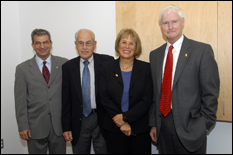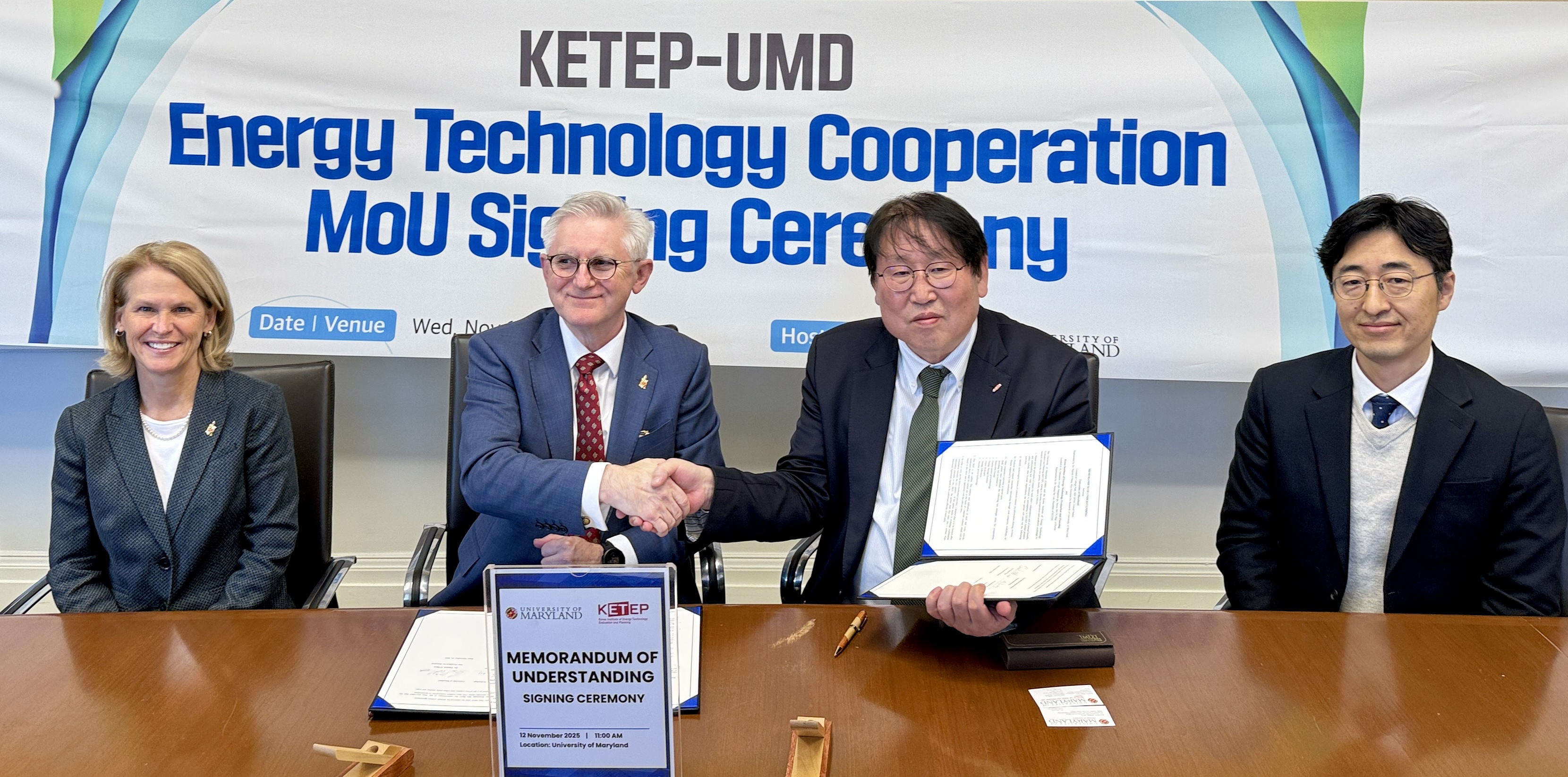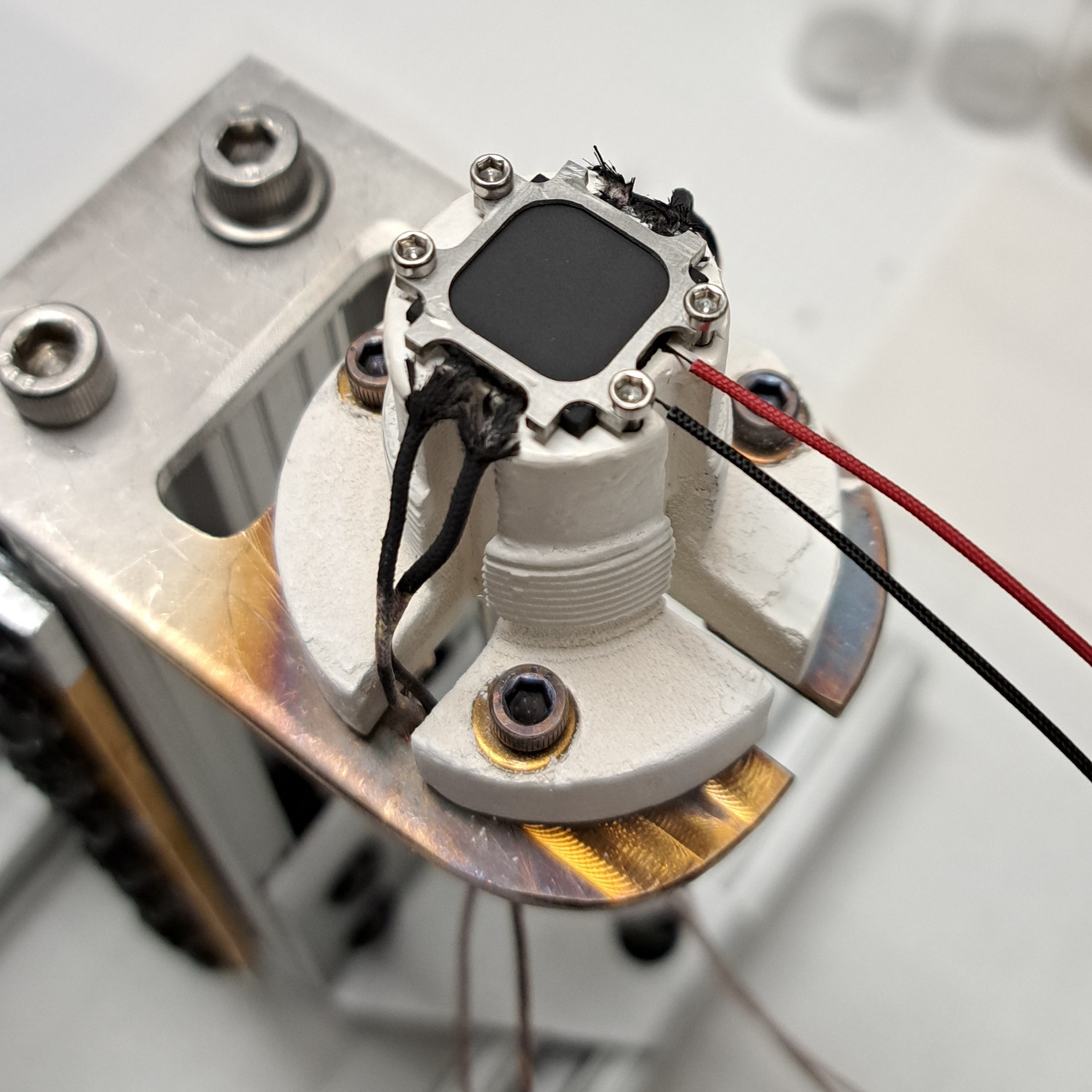News Story
Advance in Creating in Vitro Programmable Biological Microfactories
A cross-disciplinary research team at the University of Maryland's A. James Clark School of Engineering and the University of Maryland Biotechnology Institute (UMBI) has shown for the first time that enzymes will perform their normal biochemical functions when electronically placed within a man-made "biochip"—a major advance in the development of biochip technology for in vitro drug discovery and delivery.
The researchers created the biochip as a tiny bioprocessing "factory" containing multiple processing sites that are addressed fluidically, electrically, and optically. At these sites the researchers used electrical voltage to place the naturally occurring biopolymer chitosan, which serves as a platform for assembling biomolecules. They have now successfully assembled an enzyme from bacteria within the biochip and shown that it can catalytically convert a small molecule (SAH) to adenine and SRH products—products essential for cell-cell communication.
"We have now demonstrated perhaps the key advance needed to realize what we seek, a powerful laboratory tool for drug discovery," said Gary Rubloff, professor in the Clark School's Department of Materials Science and Engineering and Institute for Systems Research (ISR), director of the Maryland NanoCenter, and a member of the research team.
The team brings together expertise in biomolecular engineering, biopolymers, chemical processing microsystems and materials.
"Using biochip microfactories, we believe it will be possible to test potential drugs for their action in modifying biochemical processes that we know are important in living cells," Rubloff said. "We hope to enable scientists and physicians to create better, more effective drugs more rapidly and at reduced cost."
One targeted application of the microfactory is to develop drugs that can interrupt "quorum-sensing." In quorum-sensing, a bacterium generates a small molecule called an autoinducer. The autoinducer is a signal to other bacteria, which, if present, create a quorum that is pathogenic, leading to an infection. When the pfs enzyme the researchers assembled in the biochip converted SAH to adenine and SRH, the enzyme performed the first two primary reaction steps in the production of autoinducer-2 (AI-2) by E coli bacteria, prime sources of infection.
By reproducting biochemical reaction sequences such as that leading to AI-2 production, the microfactory can support drug discovery. Candidate drugs can be applied in the biochip to test their ability to suppress or interrupt the production of the autoinducer as well as to identify which part of the biochemical synthesis pathway is affected by the drug.
Drugs that suppress the action of the pfs enzyme or later steps in AI-2 synthesis will not only serve as good candidates for new antibiotics, but they promise a new strategy for antibiotic therapy. Conventional antibiotics work by killing bacteria, but in doing so they stimulate mutations that provide resistance to the drugs.
The University of Maryland researchers are seeking drugs that, instead of killing the bacteria, would simply interfere with the communication between them so that they do not form a coordinated pathogenic population. The team envisions the use of programmable biological microfactories as tools for rapid screening and development of new drugs prior to time-consuming, expensive clinical trials.
This development advances research funded by the Robert W. Deutsch Foundation and a National Science Foundation Emerging Frontiers in Research and Innovation grant of $2 million awarded to Rubloff; Greg Payne, director of the UMBI's Center for Biosystems Research; Reza Ghodssi, associate professor with the Clark School's electrical and computer engineering department and ISR; and William Bentley, Robert E. Fischell Distinguished Professor and chair of the Fischell Department of Bioengineering.
Results are reported in a recent issue of the journal Lab on a Chip (vol. 8, pp. 420-430, 2008). Lab on a Chip paper ».
For More Information:
Institute for Systems Research
Fischell Department of Bioengineering
Department of Electrical and Computer Engineering
Maryland NanoCenter
University of Maryland Biotechnology Institute
Published March 27, 2008











